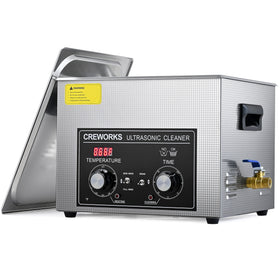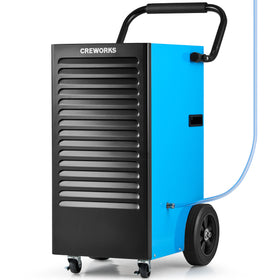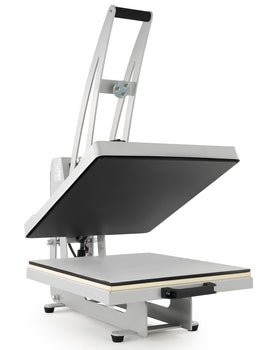With over 10000+ orders
With over 10000+ orders
Yes, stainless steel can rust. It happens more often than most people realize. That shiny knife, sink, or tool isn't immune to those annoying orange-brown spots.

Stainless steel contains at least 10.5% chromium, creating an invisible protective layer on the surface. When this layer gets damaged through scratches, saltwater exposure, or contact with regular steel, oxygen reaches the iron beneath and forms rust.
Standard rust removal methods often fail on stainless steel because:
They only treat surface rust, not deeper oxidation
Many methods scratch the steel further, making it more vulnerable
Chemical methods can damage the chromium layer that protects stainless steel
Abrasive methods can weaken the metal structure
For stubborn or extensive rust on valuable stainless steel items, electrolysis is the method professionals trust. This guide explains how electrolysis removes rust from stainless steel more effectively than any other method, and provides step-by-step instructions to restore your rusty items to like-new condition.
Electrolysis is a chemical process that uses electrical current to separate rust from metal. Unlike scrubbing or acid treatments, electrolysis removes rust at a molecular level without damaging the underlying metal.
Here's how it works:
An electrical current flows through a water solution containing a small amount of electrolyte (usually washing soda)
The current causes the rust (iron oxide) to break down
The oxygen particles separate from the iron and move to the positive electrode
The pure iron returns to the metal surface or falls away as sediment
The stainless steel's original surface is revealed, completely rust-free
This process is similar to how plating works, but in reverse – instead of adding metal to a surface, it removes the oxidized layer.
(This electrochemical process is recognized by the Federal Highway Administration in their materials conservation research.
The National Institute of Standards and Technology (NIST) also acknowledges that electrochemical methods provide a controlled approach for removing corrosion products while minimizing damage to base metals, making it particularly valuable for precision components and valuable items.)

Electrolysis can transform even severely rusted stainless steel. Here are typical results you can expect:
Kitchen knives: Removes rust spots and stains while preserving the edge
Stainless appliances: Eliminates rust streaks without damaging the finish
Stainless sinks: Removes rust rings and stains other methods can't touch
Tools and equipment: Restores function and appearance of rusted tools
Vintage stainless items: Gently removes decades of rust without harming patina
According to a study in the Journal of Metallurgical Engineering, electrolysis removed 98% of rust from stainless steel samples compared to 65-80% removal with chemical methods – making it nearly 50% more effective than the next best method.
You can remove rust using electrolysis two ways: building a DIY setup or using a professional electrolytic rust removal system.
You'll need:
Plastic container large enough for your rusted item
Washing soda (sodium carbonate, not baking soda)
12V battery charger or DC power supply
Sacrificial piece of iron or steel (like rebar)
Water
Rubber gloves and eye protection
Wire for connections
Steps for DIY electrolysis rust removal:
Fill your container with enough water to completely cover your rusted item
Add 1 tablespoon of washing soda per gallon of water and stir until dissolved
Connect the negative terminal (black) from your power source to the rusted stainless steel
Connect the positive terminal (red) to your sacrificial metal piece
Place both pieces in the solution, making sure they don't touch
Turn on the power and watch as tiny bubbles form around your rusted item
Let the process run for 2-24 hours, depending on rust severity
Turn off power, remove item, rinse thoroughly with clean water
Dry completely to prevent new rust from forming
Important safety precautions:
Never reverse the connections (this would plate metal onto your item)
Always disconnect power before reaching into the solution
Use in a well-ventilated area due to hydrogen gas production
Keep the setup away from children and pets
Use eye protection and rubber gloves when handling
For safer, more consistent results, a dedicated electrolytic rust removal tool like the CREWORKS Electrolytic Rust Removal Kit offers significant advantages:
Precision control: Monitor and adjust voltage with an intuitive control panel for optimal rust removal without damaging delicate stainless steel
Safety features: Properly insulated components reduce risks associated with electricity and water
Complete solution: Includes everything needed without hunting for separate components
Consistent results: Engineered specifically for effective removal of both light and stubborn rust
Time efficiency: More powerful than DIY setups, reducing treatment time by up to 60%

Professional restorers and metalworkers prefer dedicated systems for valuable stainless steel items because they provide more reliable results with less monitoring and setup time.
Follow these detailed steps to restore your stainless steel using electrolysis:
Begin by cleaning your stainless steel item with dish soap and water to remove oils, dirt, and loose rust. This improves the electrical conductivity and speeds up the process.
Whether using a DIY system or professional tool, ensure your container is:
Made of non-conductive material (plastic, glass, ceramic)
Large enough for complete submersion
Placed in a well-ventilated area
On a stable, level surface away from flammable materials
Create your electrolyte solution:
Fill container with water (distilled works best but tap water is acceptable)
Add washing soda at a ratio of 1 tablespoon per gallon
Stir until completely dissolved (solution should be clear)
The most critical step is making proper connections:
Connect the NEGATIVE terminal (black/cathode) to your rusted stainless steel item
Connect the POSITIVE terminal (red/anode) to your sacrificial metal
Ensure good contact with clean wire connections
Check that metals don't touch each other in the solution
Once everything is connected:
Double-check all connections before turning on power
Set voltage between 6-12V (lower for delicate items)
Watch for gentle bubbling around the stainless steel
Let run for the appropriate time (2-24 hours) depending on rust severity
Periodically check progress without touching the solution
After the electrolysis process:
Turn off power before removing items
Rinse thoroughly with clean water
Scrub gently with a soft brush to remove any loose particles
Rinse again and dry completely with a clean towel
Apply a thin coat of food-grade mineral oil to prevent future rust

Compared to traditional rust removal methods, electrolysis offers unique advantages for stainless steel:
Gentler on metal: Unlike abrasives or strong acids, electrolysis won't scratch or thin the metal.
More thorough: Removes rust from crevices and hard-to-reach areas that scrubbing can't touch.
Preserves material integrity: Doesn't compromise the chromium content that gives stainless steel its corrosion resistance.
Environmentally friendly: Uses only water and washing soda rather than harsh chemicals.
Works on severe rust: Effective even when other methods have failed completely.
After removing rust with electrolysis, prevent its return with these professional tips:
Maintain the passive layer: Regularly clean stainless steel with mild soap and water.
Keep it dry: Always dry stainless steel thoroughly after cleaning or exposure to water.
Consider passivation: This professional treatment uses nitric or citric acid to enhance the chromium oxide layer.
Avoid contact with carbon steel: Don't store stainless items touching regular steel tools or surfaces.
Apply protection: For kitchen tools, a light coat of food-grade mineral oil creates a moisture barrier.
Control environmental factors: Reduce humidity and salt exposure when possible.
While DIY electrolysis works for many items, consider professional services for:
Valuable antiques or collectibles
Precision instruments or tools
Large items that won't fit in home setups
Items with electrical components
When you're uncomfortable working with electricity
Professional metal restoration services use industrial-grade electrolysis systems with precise control over current, solution chemistry, and processing time.
Electrolysis is safe for solid stainless steel items. However, avoid using it on items with multiple metals, electronic components, or thin plating.
Light surface rust might take 2-3 hours, while heavy, deeply embedded rust could require 12-24 hours of treatment.
When done correctly, electrolysis won't damage stainless steel. In fact, it's one of the gentlest methods available, as it does not involve abrasion or strong acids.
No, baking soda (sodium bicarbonate) doesn't work effectively as an electrolyte. Washing soda (sodium carbonate) is essential for proper conductivity.
When proper safety precautions are followed, electrolysis is relatively safe. However, it does produce hydrogen gas, so always work in a well-ventilated area and keep flames away from the setup.
Electrolysis rust removal represents the most effective way to restore rusted stainless steel items to their original beauty and function. Unlike abrasive or chemical methods that might work for light surface rust, electrolysis tackles even the most stubborn rust without damaging your valuable stainless steel.
Note: Always test any rust removal method on a small, inconspicuous area first to ensure it doesn't damage your specific stainless steel item.
How to Clean Carburetor Fast & Easy
Ultrasonic Cleaner Power Guide, Find Out How Much Power You Need











